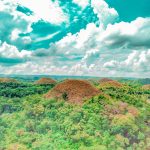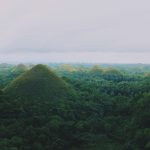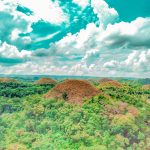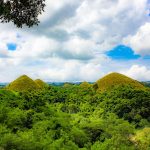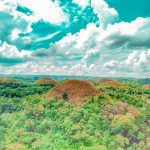Download links
How to install Rediscovering Paradise: Boracay's Timeless Beauty APK?
1. Tap the downloaded Rediscovering Paradise: Boracay's Timeless Beauty APK file.
2. Touch install.
3. Follow the steps on the screen.
Description
Boracay, a small island in the Philippines, has a rich and storied history that dates back centuries. Originally inhabited by the Ati people, an indigenous group, the island was known for its lush landscapes and pristine beaches. The Ati engaged in subsistence farming and fishing, living harmoniously with the land and sea.
The island remained relatively obscure until the late 20th century when it began to attract attention from travelers seeking unspoiled natural beauty. In the 1970s, Boracay was “discovered” by backpackers and adventurous tourists who were drawn to its stunning white sand beaches and crystal-clear waters. This marked the beginning of a transformation that would turn Boracay into one of the most sought-after tourist destinations in the world.
As tourism began to flourish, Boracay underwent significant changes. The influx of visitors led to the development of accommodations, restaurants, and various recreational activities. By the 1990s, Boracay had established itself as a premier beach destination, attracting both local and international tourists.
However, this rapid development came at a cost. The island’s natural resources were strained, and environmental degradation became a pressing issue. The once-pristine beaches were littered with waste, and the delicate marine ecosystems faced threats from overfishing and pollution.
Despite these challenges, Boracay’s allure remained strong, drawing millions of visitors each year who sought to experience its breathtaking beauty.
Key Takeaways
- Boracay has a rich history dating back to the 1940s when it was a quiet and undeveloped island.
- The environmental rehabilitation of Boracay has restored its natural beauty and made it a sustainable destination.
- Boracay’s White Beach is a charming and relaxing haven for tourists, with its powdery white sand and crystal-clear waters.
- The island offers a paradise for diving and snorkeling enthusiasts, with its diverse marine life and vibrant coral reefs.
- Boracay’s culinary scene is a fusion of flavors, offering a delightful experience for food lovers in paradise.
- Sustainable tourism and responsible travel are crucial in preserving Boracay’s timeless beauty for future generations to enjoy.
The Environmental Rehabilitation of Boracay: Restoring its Timeless Beauty
In 2018, the Philippine government took decisive action to address the environmental crisis facing Boracay. The island was temporarily closed to tourists for six months to facilitate a comprehensive rehabilitation program aimed at restoring its natural beauty and ecological balance. This unprecedented move was driven by the urgent need to address issues such as sewage management, waste disposal, and the overdevelopment of land.
During this closure, extensive infrastructure improvements were made, including the installation of a centralized sewage treatment facility that significantly reduced pollution entering the waters surrounding the island. The rehabilitation efforts also focused on reforestation and the protection of marine habitats. Local authorities worked closely with environmental organizations to implement sustainable practices that would ensure the long-term health of Boracay’s ecosystems.
Beach clean-up drives became a regular occurrence, engaging both residents and tourists in preserving the island’s natural beauty. The government also imposed stricter regulations on construction and development projects to prevent further environmental degradation.
The Charm of Boracay’s White Beach: A Haven for Relaxation

Boracay’s White Beach is often hailed as one of the most beautiful beaches in the world, and for good reason. Stretching over four kilometers along the western coast of the island, this beach is characterized by its powdery white sand that feels like silk beneath your feet. The beach is divided into several stations, each offering a unique atmosphere and experience.
Station 3 offers a more laid-back vibe, perfect for those seeking tranquility away from the crowds. Visitors flock to White Beach not only for its stunning beauty but also for its array of activities. Sunbathing under the warm tropical sun is a favorite pastime, while water sports such as parasailing, jet skiing, and paddleboarding provide adrenaline-pumping excitement. As the sun sets, the beach transforms into a magical setting where visitors can enjoy beachside dining or simply relax with a cocktail in hand while watching the sky turn shades of orange and pink. The charm of White Beach lies not only in its physical beauty but also in the sense of community it fosters among locals and tourists alike.
Exploring the Marine Life of Boracay: A Diving and Snorkeling Paradise
| Marine Life | Diving | Snorkeling |
|---|---|---|
| Coral Reefs | Abundant | Visible from surface |
| Fish Species | Diverse | Colorful and varied |
| Sea Turtles | Occasional sightings | Occasional sightings |
| Sharks | Rare sightings | Rare sightings |
Beyond its stunning beaches, Boracay is also renowned for its vibrant marine life, making it a paradise for divers and snorkelers. The waters surrounding the island are teeming with diverse ecosystems that include coral reefs, underwater caves, and an abundance of marine species. Popular diving spots such as Crocodile Island and Yapak offer opportunities to encounter colorful fish, sea turtles, and even occasional sightings of larger marine animals like manta rays and reef sharks.
Snorkeling is equally rewarding in Boracay’s crystal-clear waters. Many tour operators offer guided snorkeling trips that take visitors to some of the best spots around the island. One such location is Puka Beach, known for its unique shell-strewn shoreline and vibrant underwater life.
Here, snorkelers can explore coral gardens filled with clownfish, parrotfish, and other tropical species. The experience is not just about observing marine life; it also serves as a reminder of the importance of protecting these fragile ecosystems from human impact.
The Culinary Delights of Boracay: A Fusion of Flavors in Paradise
Boracay’s culinary scene is as diverse as its visitors, offering a delightful fusion of flavors that reflect both local traditions and international influences. From street food stalls to high-end restaurants, there is something to satisfy every palate. Fresh seafood is a highlight of Boracay’s cuisine, with many establishments serving dishes made from locally caught fish and shellfish.
Grilled squid, shrimp sinigang (a sour soup), and kinilaw (Filipino ceviche) are just a few examples of the delectable offerings available. In addition to traditional Filipino fare, Boracay boasts a vibrant international dining scene that includes Italian pizzerias, Japanese sushi bars, and Mediterranean bistros. This culinary diversity is further enhanced by the island’s thriving food market culture, where visitors can sample an array of dishes from various vendors.
Events such as food festivals showcase local chefs’ creativity while promoting sustainable practices by using locally sourced ingredients. Dining in Boracay is not just about satisfying hunger; it is an experience that brings people together over shared flavors and cultural exchanges.
Preserving Boracay’s Timeless Beauty: Sustainable Tourism and Responsible Travel

As Boracay continues to attract millions of visitors each year, the importance of sustainable tourism practices cannot be overstated. The island’s rehabilitation efforts have set a precedent for responsible travel that prioritizes environmental conservation while still allowing for economic growth through tourism. Local authorities are actively promoting initiatives that encourage visitors to engage in eco-friendly practices during their stay.
One such initiative involves educating tourists about waste management and encouraging them to minimize plastic use by providing alternatives like reusable bags and water bottles. Additionally, many resorts have adopted sustainable practices such as using solar energy, implementing water conservation measures, and sourcing food locally to reduce their carbon footprint. Tourists are also encouraged to participate in community-based activities that support local livelihoods while fostering a deeper connection with Boracay’s culture.
The future of Boracay hinges on striking a balance between tourism development and environmental preservation. By embracing sustainable practices and responsible travel habits, both visitors and locals can work together to ensure that this paradise remains a cherished destination for generations to come. The journey toward preserving Boracay’s timeless beauty is ongoing, but with collective effort and commitment, it is possible to maintain its allure while safeguarding its natural treasures for future explorers.
If you’re planning a trip to Boracay, you may want to consider downloading WhatsApp Business to stay connected with local businesses and accommodations. This messaging app allows for free calls and messages, making it easier to communicate with vendors and book reservations. Check out this article for more information on how WhatsApp Business can enhance your travel experience in Boracay.
FAQs
What is Boracay?
Boracay is a small island in the Philippines known for its beautiful white sand beaches and clear blue waters. It is a popular tourist destination for its stunning natural beauty and vibrant nightlife.
What are the popular activities in Boracay?
Some popular activities in Boracay include swimming, snorkeling, scuba diving, kite surfing, and island hopping. The island also offers a variety of restaurants, bars, and shops for visitors to enjoy.
When is the best time to visit Boracay?
The best time to visit Boracay is during the dry season, which runs from November to April. This is when the weather is most pleasant and the waters are calm, making it ideal for beach activities.
Is Boracay family-friendly?
Yes, Boracay is a family-friendly destination with plenty of activities and accommodations suitable for families. The island offers a range of options for visitors of all ages, including kid-friendly beaches and resorts.
Are there any environmental regulations in Boracay?
Yes, in 2018, the Philippine government closed Boracay for six months to undertake major environmental rehabilitation efforts. Since then, the island has implemented strict regulations to protect its natural resources, including limits on the number of visitors and activities allowed on the island.

